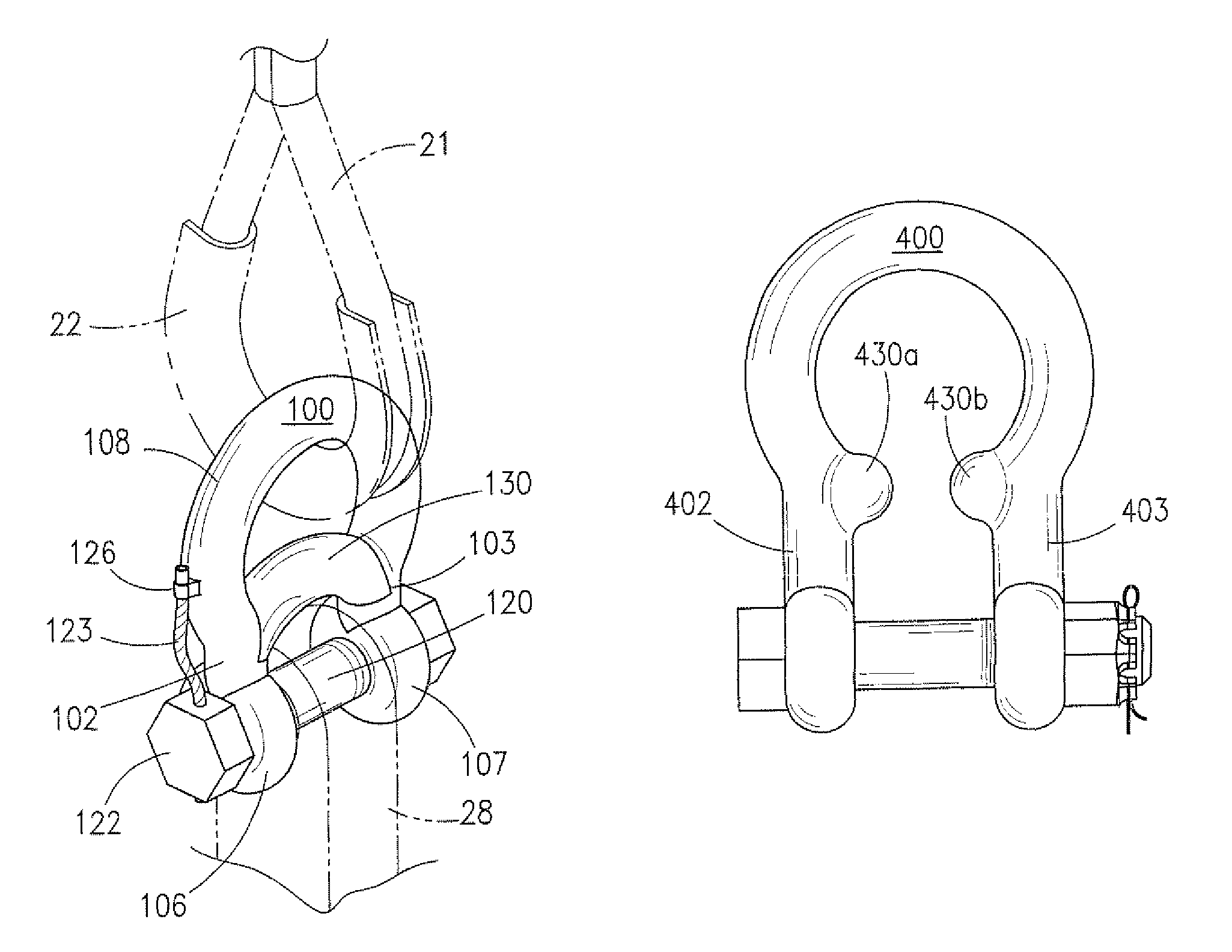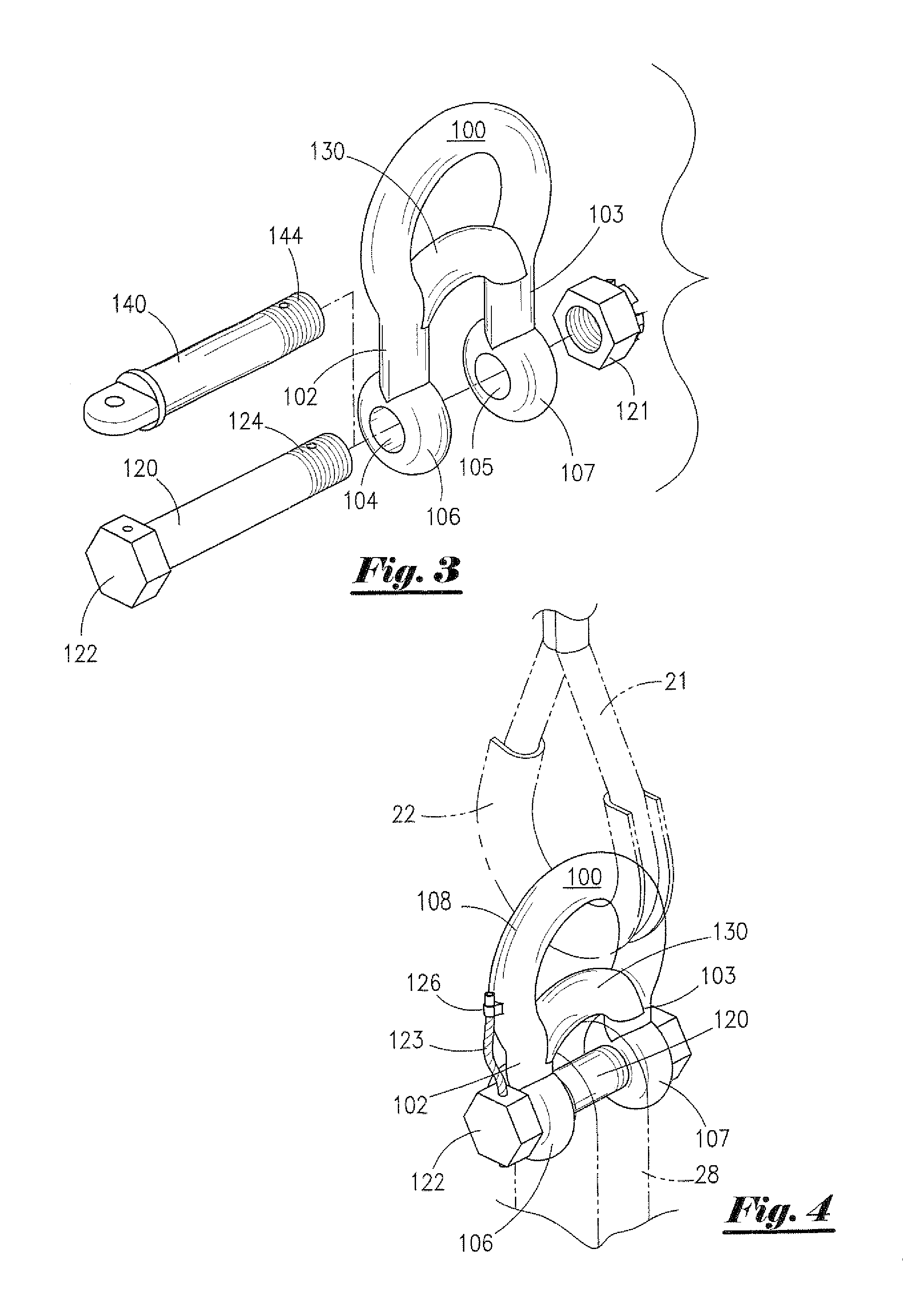Shackle apparatus
a technology of shackles and cables, applied in the direction of shackles, load-engaging elements, chain elements, etc., can solve the problems that the shackles on other slings or lifting cables defeat the purpose of the above-mentioned safety practices
- Summary
- Abstract
- Description
- Claims
- Application Information
AI Technical Summary
Benefits of technology
Problems solved by technology
Method used
Image
Examples
Embodiment Construction
[0042]Referring now to the drawings, FIG. 1 depicts a partially-exploded front view of an embodiment of a conventional lifting assembly utilizing a prior art shackle member 1 having a curved, substantially U-shaped body section 8, first arm 2 and second arm 3. A throat or gap 5 is defined between said first arm 2 and second arm 3, and a mouth or opening 4 leads to said throat 5. Arms 2 and 3 of prior art shackle 1 also include substantially parallel ends 6 and 7 respectively. Substantially parallel ends 6 and 7 include aligned coaxial transverse bores 6a and 7a (not visible in FIG. 1), respectively, for receiving a bolt 23 or other rigid member.
[0043]In the conventional lifting assembly depicted in FIG. 1, mouth 4 of prior art shackle 1 is first passed through loop 21 of a sling or lifting cable 20. Coaxial transverse bores 6a and 7a of prior art shackle 1 are aligned with an opening (not visible in FIG. 1) in a lift lug or pad eye 28 of a load to be lifted. Bolt 23 is thereafter in...
PUM
 Login to View More
Login to View More Abstract
Description
Claims
Application Information
 Login to View More
Login to View More - R&D
- Intellectual Property
- Life Sciences
- Materials
- Tech Scout
- Unparalleled Data Quality
- Higher Quality Content
- 60% Fewer Hallucinations
Browse by: Latest US Patents, China's latest patents, Technical Efficacy Thesaurus, Application Domain, Technology Topic, Popular Technical Reports.
© 2025 PatSnap. All rights reserved.Legal|Privacy policy|Modern Slavery Act Transparency Statement|Sitemap|About US| Contact US: help@patsnap.com



